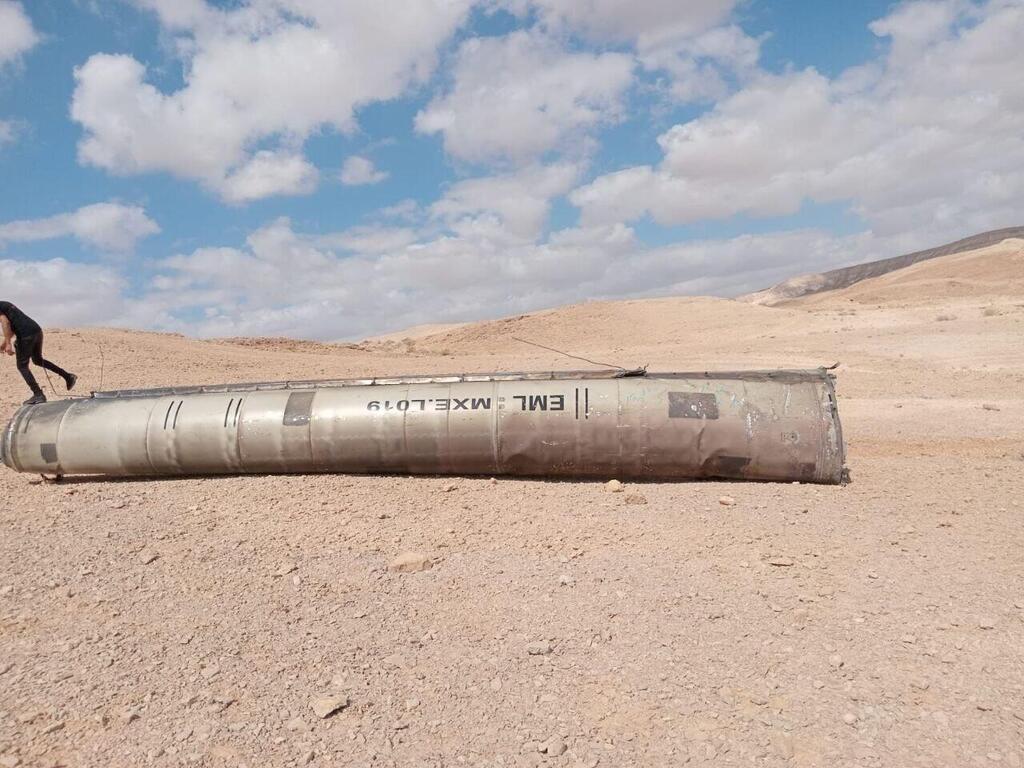Getting your Trinity Audio player ready...
Iran launched over 180 ballistic missiles toward Israel
Three types of advanced ballistic missiles from Iran's arsenal were deployed in the powerful missile strike on Israel, Qatari newspaper The New Arab reported on Wednesday, citing Iranian media.
An Iranian military expert told the paper that the missiles used in the attack were the Fattah-1, Emad and Ghadr-110H models.
On Tuesday, Iran launched nearly 200 missiles at Israel, most of which were intercepted, though some landed in central and southern Israel. Israeli officials vowed a severe response to the large-scale attack, while Iran continued issuing threats.
A video was released showing Revolutionary Guard Commander Hossein Salami ordering the operation, dubbed “Operation True Promise 2,” following a similar attack in April of the same name
Revolutionary Guard Commander Hossein Salami orders Operation True Promise 2
Iranian military expert Morteza Al-Masawi informed the Qatari newspaper that the Fattah-1 missile has a range of 1,400 kilometers (870 miles) and is equipped with a maneuverable warhead. "One key advantage of these missiles is their ability to be launched from commercial ships, submarines, warships, Russian Su-24 aircraft and Iranian F-4 planes," he noted.
The Fattah-1 was unveiled by Iran's Revolutionary Guard in June 2023, with then-president Ebrahim Raisi in attendance. Raisi, who died in a helicopter crash in May, called the missile "a pillar of national strength."
The Iranian missiles behind the attack on Israel
The missile is 44.6 feet long, 31.5 inches in diameter, and travels at speeds between Mach 13 and Mach 15. It is also reportedly capable of evading radar detection. Pro-Iranian militias in Iraq, through the news agency Sabreen News, also claimed the Fattah-1 was used in Tuesday’s attack.
Al-Masawi claimed that Iran joined the club of hypersonic missile nations in November 2022, though Israeli officials have repeatedly denied that Tehran possesses hypersonic missile capabilities.
Regarding the Ghadr-110H, Al-Masawi described it as a surface-to-surface ballistic missile with a range of 2,000 kilometers (1,240 miles), a modernized version of Iran's Shahab-3 missile.
The Ghadr measures 52 feet in length, 4.1 feet in diameter, and carries a warhead weighing between 700 kilograms and one ton (1,550-2,200 pounds). It travels at Mach 9, is capable of evading radar, and can be launched from mobile platforms, the expert added.
Al-Masawi also explained that the Emad is an advanced variant of the Ghader surface-to-surface ballistic missile, with a range of 1,700 kilometers (1,060 miles). Weighing 1.75 metric tons (3,860 pounds), the missile has enhanced guidance and control capabilities, allowing for precise targeting. The Emad was developed by Iran's Defense Ministry and was first revealed in October 2015.
Get the Ynetnews app on your smartphone:








